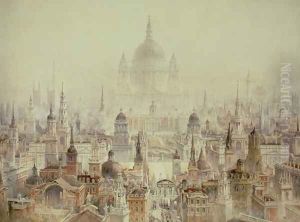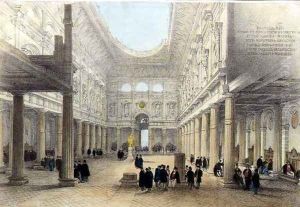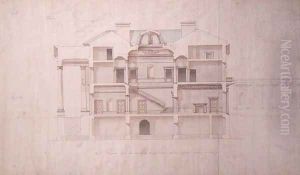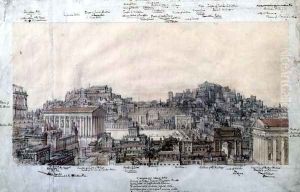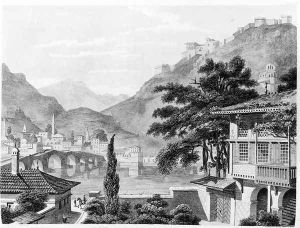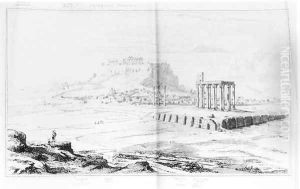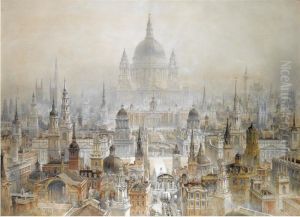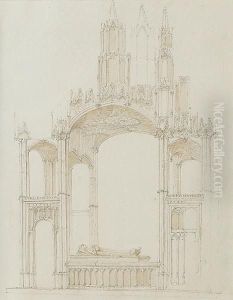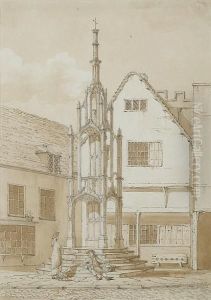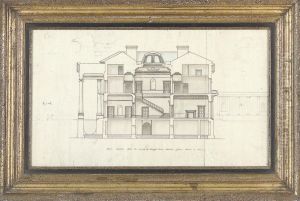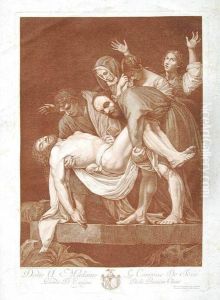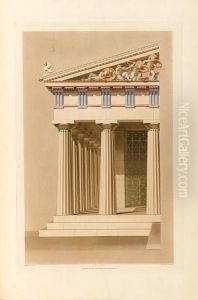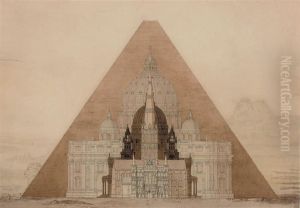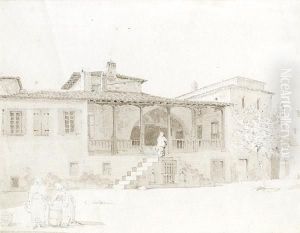Charles Robert Cockerell Paintings
Charles Robert Cockerell was a pivotal figure in the 19th-century architecture, archaeology, and the arts, whose contributions left a lasting impact on these fields. Born on April 27, 1788, in London, England, Cockerell was part of a well-connected and creatively inclined family. His father, Samuel Pepys Cockerell, was also an architect, which undoubtedly influenced Charles' career path from an early age.
Cockerell's education and early career were marked by extensive travel and study, which were common for aspiring architects of his time. He embarked on a Grand Tour of Europe and the Near East, which was crucial for his development. During these travels, Cockerell demonstrated a keen interest in the ancient world, particularly in Greece and Italy, where he studied classical architecture and participated in several important archaeological excavations.
One of Cockerell's most significant archaeological contributions was his work at the Temple of Apollo Epicurius at Bassae in Greece, where he discovered the frieze that is now a prized possession of the British Museum. This discovery, made in the early 19th century, was instrumental in the revival of interest in Greek architecture and culture in Europe and solidified Cockerell's reputation as a scholar and archaeologist.
As an architect, Cockerell's work was characterized by a blend of neoclassicism and innovation. He was adept at integrating classical principles with the needs and tastes of his time, which is evident in buildings such as the Ashmolean Museum in Oxford and the Bank of England. His designs often reflected his profound knowledge of classical architecture, but he also embraced new materials and techniques, making his work distinctive in the architectural landscape of his era.
Cockerell was also an influential educator and held the position of Professor of Architecture at the Royal Academy of Arts, where he nurtured the next generation of architects. His lectures and writings contributed significantly to the architectural discourse of his time.
Throughout his career, Cockerell received numerous accolades, including the Royal Gold Medal for architecture. He was knighted in 1839, a testament to his contributions to architecture and the arts. Charles Robert Cockerell passed away on September 17, 1863, leaving behind a legacy that continues to be celebrated for its impact on architecture, archaeology, and the understanding of classical antiquity.
